CubaDebate 174
Fines Up to 3,000 Pesos for Littering

Since March in Havana, Fines of Up to 3,000 pesos for Throwing Debris Outside Established Sites
February 20, 2020
Translated and edited by Walter Lippmann for CubaNews.

As of March, those who generate cadres like this in the Cuban capital will have to think about it and comply with the regulations of the local authorities. Photo: Ismael Francisco/Cubadebate
The provincial government of Havana, as part of the People’s Movement for a More Beautiful, Cleaner and Healthier Havana, has established that the state entities or families that carry out constructive actions in their properties are responsible for the final destination of the rubble generated. It must be deposited only in the sites defined for that purpose by the people’s councils.
As of March 1, this provision, in accordance with the City’s Ornamental Regulations, also establishes that the rubble may be deposited at the points defined by each people’s council, which will never coincide with the traditional points for depositing domestic waste.
In the case of residents in the municipalities of Central Havana and Old Havana, citizens and entities may contract the debris collection service to the Water Company of Havana.
In the remaining municipalities, this can be done by contacting the Provincial Direction of Hygiene, through the telephone numbers 7260-1440, Command Post, and 7260-3011, Commercial Department.
Violation of the rules may be subject to a fine of up to 3,000 pesos.
It is also established that each state or social entity is responsible for the permanent cleaning and beautification of its establishments, including its perimeter environment.
The structures of each people’s council, in close coordination and with the active participation of the CDR, FMC, CTC, ANAP and the Association of Combatants, will systematically develop mobilization actions aimed at maintaining cleanliness in the community, calling on families to deposit household waste at established collection points and during the hours of 6:00 p.m. to 10:00 p.m.
Those who violate this communal hygiene norm could be fined up to 1,500 pesos. Similarly, the person responsible for collecting the waste may be fined similarly if he or she fails to comply with it.
French Journalist Jean Daniel has died

Jean Daniel, Founder of Le Nouvel Observateur and One of the Most Influential Journalists of the 20th Century, Has Died
February 20, 2020
Translated and edited by Walter Lippmann for CubaNews.

Daniel was active during the last few years. Photo: AFP.
Jean Daniel, founder of the weekly Le Nouvel Observateur, a legendary journalist who lived some of the most transcendental events of the second half of the 20th century, died at the age of 99, the French publication reported Thursday.
Born in Blida (Algeria) in 1920, Daniel was one of the most influential intellectuals on the left in France and is especially remembered for his proximity to figures such as the writer Albert Camus. In 2004 he received the Prince of Asturias Award for Communication and Humanities.
Daniel gained international prestige thanks to an interview he conducted with John F. Kennedy, whose assassination he soon learned about live alongside Cuban leader Fidel Castro in November 1963.
During the Second World War had joined the resistance against the Nazi occupation. He fought alongside General Leclerc in the liberation of France and at the end of the conflict he studied philosophy at the Sorbonne University in Paris.
In 1947 he founded a cultural magazine, Caliban, with the support of Camus, and directed it until 1951.
In 1954 he started working for the weekly newspaper L’Express, covered the Algerian war and declared himself in favor of negotiating with the independence fighters of the National Liberation Front (FLN).
With the notoriety gained from his cross-relationship with Kennedy and Fidel Castro, Jean Daniel teamed up with businessman Claude Perdriel in the 1964 purchase of France Observateur (recently renamed L’Obs), which they turned into Le Nouvel Observateur, which became the leading weekly newspaper of the French left.
He remained as director until 2008 and continued as an editorialist practically until the end.
(With information from EFE)
Tom and Jerry Turn 80

Tom and Jerry Turn 80
February 15, 2020
Translated and edited by Walter Lippmann for CubaNews.

he hilarious Tom and Jerry, the cat and mouse, are silent characters.
This is the 80th anniversary of the release of one of the most famous cartoons of all time: Tom and Jerry.
How did this story come about? The plot is simple: fed up with the mouse that wanders around his house, a cat sets up a plan to throw him out with a trap loaded with cheese.
But the mouse, who is very lively, manages to get his favorite food out without any problem and then continues to walk around the corridors – and rooms, and so on – very happily. The cat insists on catching him, but always fails.
The friendly animal duo was created, as they say, in a moment of desperation.
The animation department of the Metro Goldwyn Mayer Studio (MGM), where the creators William Hanna and Joseph Barbera worked, had tried unsuccessfully to imitate other studios that had created successful characters like Mickey Mouse and the Porky Pig.
The animators, both under 30, began to think of their own ideas.
Barbera said he liked the simple concept of a caricature of a cat and mouse, with conflict and persecution, even though it had been done before.
Puss Gets the Boot (translated into Spanish as “El gato se gana el zapatazo”) was the first animated short film they released in February 1940.
The debut was very good and earned the studio an Oscar nomination for best animated short.
And the success deepened when a letter arrived from an influential figure in the entertainment industry from Texas asking when he was going to see another one of those “wonderful cat and mouse cartoons.”
Jasper and Jinx, as they were originally called, then became Tom and Jerry.
According to Barbera, there was never any discussion about the characters not talking.
Having grown up with silent films starring Charlie Chaplin, the creators knew that the cat and mouse could be fun without any dialogue.
The music, composed by Scott Bradley, highlighted the action of the plot, and Tom’s “human” cry was played by Hanna himself.
For most of the next two decades, Hanna and Barbera supervised the production of more than 100 of these short films.
In the world, these Tom and Jerry films are considered the best, because of their excellent hand-drawn animation.
In the mid-1950s, when producer Fred Quimby retired, Hanna and Barbera took over the MGM cartoon department. It was a time of budget cuts.
Tom and Jerry is still very popular around the world. It can be found on children’s television everywhere from Japan to Pakistan, and a new game about them for cell phones has over 100 million users in China.
(With information from La República)
Chronicle of Harassment Announced

Chronicle of Harassment Announced
 By Dixie Edith
By Dixie Edith
Cuban journalist and professor at the Faculty of Communication of the University of Havana.
On Twitter @Dixiedith
January 16, 2020
Translated and edited by Walter Lippmann for CubaNews.

The pictograms indicate a public bath located in the new recreational space at the intersection of 1st and 70th streets, in the capital city of Playa. Photo: Ariel Terrero.
From a bad joke to sexism is only one step removed. Evidence abounds; it is enough to review, even as the crow flies, various communication spaces, in any format. But what happens when the dubious attempt of a joke, as if that were not enough, makes a crime acceptable?
The question is neither banal nor exaggerated. A few days ago, a group of students from the Communications Department at the University of Havana, had just finished their semester of studies on gender. They were debating via WhatsApp about the photo that accompanies this text. “But what is this?”, some asked. “Doesn’t anyone realize this nonsense?”, asked others.
The photo captured the pictograms that point to a public bathroom located in the new recreational space of the capital’s coast, at the intersection of 1st and 70th streets, in Playa municipality. The figures show a man sneaking a look at a woman, above what looks like the wall that divides the two stalls. And here, the frustrated attempt at a “joke” came and went.
We are no longer talking about old hats: top hats for them and full of flowers or lace for them; or stereotypical film characters showing the gallant and the maiden, the flamenca and the bullfighter. Not even of those other attempts at “creativity” that appeal to phallic symbols, heels or ties, or any other topic tinged with sexism, by the work and grace of the macho tradition that pursues us.
Now we are also witnessing incitement to an act that is punishable under our laws. And, as if this were not enough, it not only positions women once again as the subject – the “natural” victim – of hegemonic masculinity, but also places all men in the position of violators of the law, of victimizers. This is called symbolic violence.
In the opinion of Yamila González Ferrer, a lawyer and expert on gender and family issues, “when what this image is showing occurs, we are dealing with a crime of harassment, provided for in Article 303 of the Criminal Code, which refers to sexual outrage”. But, for her, the most serious thing in this particular case is that “this type of symbolism is used in a public place”.
The aforementioned Article 303 has three subparagraphs, which propose sanctions of up to “three months’ imprisonment” or a “fine of one hundred to three hundred pesos“ for those who harass other persons “with sexual requirements”; offend “modesty or good manners with obscene exhibitions or acts”, or produces or puts into circulation “publications, recordings, cinematographic or magnetic tapes, recordings, photographs or other objects that are obscene, tending to pervert or degrade customs”.
If I were to make a dynamic or evolving interpretation of the law,” says Yamila, “then subparagraph c of that offense of sexual abuse could be applied perfectly well to that case.
Another lawyer, Dr. Arlín Pérez Duarte, agrees with her, in this case an experienced criminal lawyer. In her opinion, this last section applies in this case from what she calls an “analogical interpretation” of the law, since it “appeals to the effects provoked”. The specialist says that, in this matter, “from the point of view of rights, there is a lot of room for improvement”.
For example, criminal implications could be sought from so-called voyeurism or, or as we say jokingly, peeping, which in the eyes of the law is considered a form of outrage or a crime against honor. Although traditionally this type of infraction in Cuba is not punished as a crime, but more as a contravention,. However, in the opinion of the penalist, in this case “it has a greater scope, since it is in an institution that provides a public service”. In other words, it goes beyond affecting an individual person.
The world of signage to label the doors of public toilets and bathrooms serves as a preview of what we will find inside. But it is an soup where multiple proposals are cooked. There are designs that move, between the thorny waters of good and bad taste, the vulgar and really creative. In this unfortunate case, to put more spice to the broth, the half-assed sign also violates Article 40 of the recently approved Constitution of the Republic, which defends human dignity; Article 43, which condemns gender violence in all its forms and Article 48, which defends the right to privacy. And we could continue looking.
Currently, many public discussions around the world are occupied with how to achieve more inclusive signage and urban spaces that do not reproduce those stereotypes that our patriarchal societies have imposed on women and men. There is talk, for example, of unisex toilets, which serve them equally, which would also help not to humiliate or discriminate against other people who have different sexual orientations and gender identities.
If we still find signs like the one in the above mentioned photo, it is clear that we are still far from those other controversies. The unfortunate thing is that the case is not unique. The same students who questioned and argued about the 1st and 70th signs also claimed to have seen similar pictograms in other establishments, especially in the self-employed sector.
As with advertising, urban design, intentionally or not, helps to perpetuate ideas through graphic codes and creative nods. And because machismo is so naturalized in our lives, we often find it hard to identify that behind those seemingly innocent jokes is a deeply violent, threatening message that, according to García Márquez, could become the advertised chronicle of a crime of harassment.
Violence Against Women

Violence against women is much more than physical or sexual
By Amelia Duarte de la Rosa
November 25, 2019
Translated and edited by Walter Lippmann for CubaNews.

nuevamujer.com
The world commemorates this November 25 International Day for the Elimination of Violence against Women, even though one in three women on the planet suffers physical or sexual violence.
However, the term “Violence Against Women” coined by the UN in 1993, encompasses many types of attacks beyond physical, sexual or psychological, and also has to do with any threatening act, whether it occurs in life public as in private.
Many women in the world suffer from labor and political violence as an inalienable part of gender inequality and lack of equal rights for women and girls.
Among the highest rates of gender violence worldwide are found in the Pacific region, the Middle East and Africa, where although physical or sexual rape has a higher incidence, the female population is unprotected in terms of economic empowerment, political leadership and inclusion.
According to the United Nations Annual Report 2017-2018, women remain trapped in a network of inequalities that place them in the worst part of unpaid care, social protection and insecurity.
Gender disparities also intersect with gaps in education, income and access to services, as well as ethnicity, sexual orientation and geographic location.
In addition, women and girls are particularly vulnerable in education, which prevents them from achieving universal schooling and having more employment opportunities.
Harassment, discrimination at work and psychological aggressiveness also affect them as victims, because women are exposed to strenuous work schedules, low earnings, difficult conditions and an increased risk of violence.
UN Women data shows that one in 10 women in the European Union declares that they have suffered cyber-bullying since the age of 15. This includes unwanted, sexually explicit and offensive emails or SMS [text] messages, or inappropriate and offensive attempts in the social networks, which are positioned as the main means through which this psychological violence is exercised.
Meanwhile, a study conducted in 27 universities in the United States revealed that 23 percent of university students are victims of sexual assault or sexual misconduct.
For its part, Africa is one of the most restrictive continents in terms of women’s rights and it is estimated that millions of them have been subjected to female genital mutilation.
In addition, it leads the ranking as the region with the least safe abortions in the world, followed by Oceania and Latin America, which takes thousands of lives each year.
It is believed that only one in four abortions is carried out in safe conditions.
UN Women implements an aid plan in several countries to close these gender gaps and create counseling centers for survivors of violence.
In addition, some governments develop economic empowerment plans to counter violence against women, such as in Japan, which, for example, approved paternity leave to allow the professional development of mothers.
However, all action continues to seem useless when, UN data confirms that 71 percent of victims of trafficking worldwide are women and girls, and one in two women in 2017 was killed by their sentimental partner or a member of their family.
(Taken from PL)
Gerardo and René on “Red Avispa”

Gerardo and René talk with Cubadebate about the film “Wasp Network” (+ Video)
By  Ana Álvarez Guerrero,
Ana Álvarez Guerrero,
Student of Journalism of the Faculty of Communication of the University of Havana. On Twitter: @aaguerrero97
and
 Irene Pérez, Cubadebate photojournalist. Graduated in Journalism from the University of Havana (2014). Contact: irene@cubadebate.cu, on Twitter: @irenepperezz
Irene Pérez, Cubadebate photojournalist. Graduated in Journalism from the University of Havana (2014). Contact: irene@cubadebate.cu, on Twitter: @irenepperezz
Translated and edited by Walter Lippmann for CubaNews.

Heroes of the Republic, Gerardo Hernández and René González, share their impressions of the film “Wasp Network” [“Red Avispa”]. Photo: María del Carmen Ramón.
Heroes of the Republic of Cuba, Gerardo Hernandez and René Gonzalez, spoke today with Cubadebate about the Cuban premiere of the film “Red Avispa” at the 41st New Latin American Film Festival.
What did you both think of the film directed by French director Olivier Assayas?
The answer to this question and their impressions of this film – one of the most controversial of this edition of the Festival – were shared by Gerardo and René this afternoon, in an exchange that was transmitted through Cubadebate’s Facebook page.
Some of Gerardo and René’s impressions of the film
René:
The film, as many people have said, is not exactly the story of the Five, it is the story of part of the Five, but it also goes beyond that to the story of the confrontation between Cuba and the United States. It seems important to me that from the point of view of a European, who has no direct relationship with this conflict of so many years, a film has been made on a subject that, during the time in which this story unfolded, was a subject censored by the media of the world. That is the fundamental value of the film. I know that it will generate debate in the Cuban public, because it is the most difficult audience for a film like this. This is because it knows the case, it lived it. If the film gets a rating of 50 points from Cuban viewers, it’s a good film.
Gerardo:
What I liked most about the film was the boldness of placing the subject of terrorism in Hollywood. It is known that in Miami they have threatened to burn cinemas that show it. I think it’s brave to make a film that, without being pro-Cuban, embraces the truth and this truth favors us because we’ve been the victims for more than half a century.
René:
The film shows 50 years of aggression, terrorism, crimes against Cuba. They are not so afraid of the film as they are of the story, a story that if they could have told it they would have done it, they have money, connections. This was a trial in which the 12 members of the jury, when they left the courtroom, took an oath of silence, did not dare to speak. In another case, each one of those 12 members would have made his book of when he was a juror in the case of the 5.
This case filled the judicial system, the judge, the jury, the prosecutors with shame, that’s why it’s a story that they can’t tell and that they’re afraid of, and that for so long they hid and tried to let nobody know. They are afraid that the history of U.S. aggression against Cuba, for so many years, will be known.
Expect an expanded summary of Gerardo and René’s statements to Cubadebate.
Faure Chomón

Faure
 By Ricardo Alarcón de Quesada
By Ricardo Alarcón de Quesada
December 7, 2019
Doctor in Philosophy and Letters, Cuban writer and politician. He was Ambassador to the UN and Chancellor of Cuba. For 20 years he presided over the National Assembly of the People’s Power of Cuba (Parliament).
Translated and edited by Walter Lippmann for CubaNews.

Faure stood out for his absolute loyalty to Fidel and Raúl, and his permanent defense of unity among revolutionaries. Photo: ACN.
Although it could happen at any time, the news of his departure causes pain and sadness. I feel the need to let those feelings flow now without dwelling on how much should be written about Faure Chomón and his decisive participation in the revolutionary cause of our people.
I met him shortly after beginning my studies at the University of Havana. He introduced us to Fructuoso Rodríguez, the inseparable companion of José Antonio Echeverría. Both engaged in an incessant struggle to transform academic life by stripping it of mediocrity and routine. At the same time, they fought to eliminate the consequences of the vices of the old politicking that hampered the revolutionary role that FEU had to play in the face of Batista’s dictatorship.
Faure led a small group that fought for these ideals, disseminating short mimeographed texts that they distributed from hand to hand.
They were uncertain times. We had to face the apoliticism and the demagogy, the frustration and the disbelief that the Republican bankruptcy had bequeathed us as a cursed inheritance. A new generation had to become its own teacher and undertake hard learning in very difficult and risky circumstances.
José Antonio and Fructuoso managed to rescue the FEU, created and directed the Revolutionary Directorate and, with their blood, they fertilized the route of freedom. Faure always accompanied them.
We fought together for half a century. In the final stage, he was advisor to the President of the National Assembly. He occupied a very modest space in the building that then housed the Parliament. We talked about the human and the divine on a daily basis. I always sought his advice, but more than as an advisor. He was always a loyal and sincere friend, a compañero of the old times. The hours went by reminding us of a glorious past that always went with us.
Others will wish him rest in peace. I know that he will continue to fight and we will continue together.
Bucanero and Cristal at Way-Too-High Prices

Bucanero and Cristal at High Prices in Private Sector, But Gone From State Stores
By Tay Beatriz Toscano Jerez
July 17, 2019
Translated and edited by Walter Lippmann for CubaNews.

At 200% of your selling price, maybe 250% of your cost price. For someone who didn’t invest a drop of sweat in producing them. Only in Cuba. Photo: September 5.
Surely the high temperatures of these days has evoked thoughts of having a beer to cool off. Perhaps you have decided to have a family reunion and, why not, taste a Bucanero or a Cristal. If you don’t change your brand (and quality), you have a very difficult time.
For some time now, it has been difficult to find the two emblematic beers produced domestically in the chain stores. However, in the private gastronomic establishments, restaurants, bars and/or cafés they are can always be found without problems and at a price that sometimes (according to “cache”) doubles their original price.
It’s really incredible: at 200% of their selling price, perhaps at 250% of their cost price. For someone who didn’t invest a drop of sweat in producing them. Only in Cuba.
What is the source of supply for those private “paladares” if, for example, in the TRD Caribe chain, only two boxes per person are sold (if the regulations were really complied with)? How many times should the waiting lines be or how many should accompany the owner of the restaurant in order to have a sufficient quantity to maintain their supply in a constant manner?
It is worth looking at this phenomenon, especially because it advocates not raising prices and because it causes equitable access to products of all kinds. Let’s remember that the country has already implemented measures of various kinds, including setting up a store for self-employed workers.
For none of us, it is a secret that there are not a few citizens whose livelihood depends precisely on being aware of how much is on sale in the CIMEX stores and the former TRD stores, in order to access as much as possible and then make a profit. Logically, however, they are not “fortune-tellers” nor do they have a particular information system that knows where things are and when.
They have their information system and their source of supply in the stores themselves. If not, how is it possible that they are almost always the first to acquire from an affordable price for the beers that have motivated this comment?
If not, the press will continue to denounce and, unfortunately, things will remain the same. This generates discredit, and not only in us journalists.
This can’t be the never-ending story. Nor does it deserve the disdain or lack of attention of all those who – in acting jointly – can and should close the way to this issue. Far from becoming a solution, has today become a problem since, on the one hand, access to beer is limited and on the other, it impacts strongly in the pocket of those who like the refreshing drink.
It is therefore imperative to enforce what has been ordered; to follow that skein that seeks to suffocate the normal course of the country’s economic and commercial processes and, let us reiterate, the pockets of the people.
It is clear that under no circumstances will the steep rise in prices be allowed; neither of the beers, nor of any other product necessary for everyone. It must not be done by the state or private sector. That is also a way of thinking as a country, thinking like Cuba.
Thousands protest U.S. anti-immigrant raids

Thousands protest against anti-immigrant raids in U.S.
July 14, 2019
Translated and edited by Walter Lippmann for CubaNews.
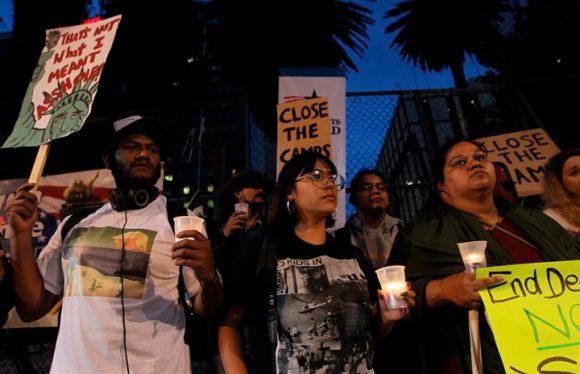
Protests for raids against undocumented immigrants. Photo: EFE
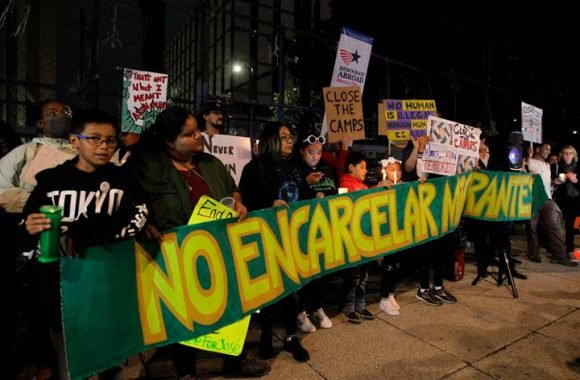
Thousands of people crowded Daley Plaza in downtown Chicago on Saturday to protest the undocumented raids ordered by U.S. President Donald Trump.
Artemio Arreola, of the Illinois Coalition for Immigrant and Refugee Rights (ICIRR), told Efe that the rally held in front of the Mayor’s office could surpass the organizers’ initial estimate of 10,000 people.
Demonstrators unfurled posters reading “close the concentration camps,” referring to facilities where immigrants, particularly children, are held at the border.
Also, “stop deportations now,” while a large sign hanging from the Daley Center building, where the Cook County courts operate, says, “End detentions, welcome immigrants.”
In a rally held in the plaza, Democratic Congressman Jesus “Chuy” Garcia, urged listeners to “tell this racist president that he has to stop the criminalization of the desperate.
The District 4 representative, which includes Latino neighborhoods such as La Villita and Humboldt Park, called Trump’s policies “cruel and inhumane.”
Other speakers demanded the “immediate cessation of attacks on immigrant families” and the “oppressive immigration policies” of the government.
Arreola said Chicago Mayor Lori Lightfoot did not participate in the protest, and toured several neighborhoods.
Among the participants were several local politicians and councilmen, but some well-known figures from the pro-immigrant struggle were absent, such as Illinois Democratic Senator Richard Durbin.
“We didn’t invite Durbin because the organizers feel he hasn’t faced Trump’s attacks hard enough to get the resources to build the border wall,” Arreola said.
The legislator participated Friday night in a meeting of Communities United, a community group in northwest Chicago.
He said it is “shameful” that the United States has come to the point of rejecting “people who are simply asking for an opportunity to have a better life, and to be part of the future of the country.”
Protests against the raids, which would begin tomorrow in Chicago and nine other cities across the country with large concentrations of immigrants, began Friday night with Liberty Lights vigils in other Illinois cities, including Aurora, Galena, Waukegan and Oak Park.
Prior to today’s rally in the plaza, representatives of the Asian American Immigrant Association met at the Chicago Cultural Center, and other groups held events in neighborhoods in the city’s northwest and southwest.
Due to the heat of 32 degrees Celsius 1, the Municipal Transportation Company parked several air-conditioned buses near the plaza so demonstrators could cool down.
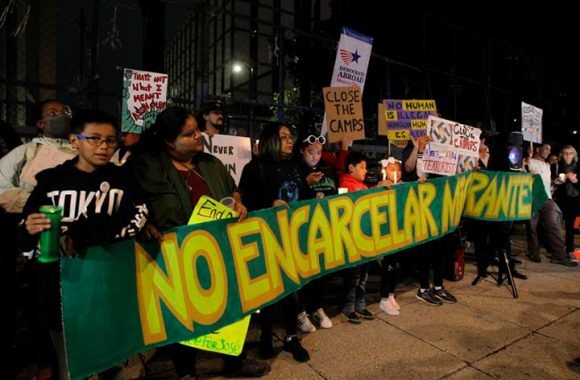
Protests for raids against undocumented immigrants. Photo: EFE

Protests for raids against undocumented immigrants. Photo: EFE
- 6 Fahrenheid ↩
World Day Against Elder Abuse

World Day Against Elder Abuse. How to Avoid Mistreatment?
June 15, 2019
Translated and edited by Walter Lippmann for CubaNews.

The UN details that the number of people over 60 or more is expected to double by 2050. Photo: teleSUR.
June 15 was designated by the UN General Assembly as the World Day for Awareness of Old Age Abuse.
Elder abuse is a social problem that affects the health and human rights of millions of older adults around the world, a single or repeated act that causes harm and suffering.
The World Health Organization (WHO) indicated that the magnitude of this problem is quite wide, since according to a study conducted in 2017, at least 15.7% of people over 60 were subjected to some form of abuse.
The agency indicated that the number of violence against older adults could be even higher, but of 24 cases of abuse in old age only one is reported, justified by their fear of notifying their relatives, friends or authorities of the abuse.
In 2018, the WHO revealed that psychologically abused older adults accounted for 11.6%, economic abuse 6.8%, neglect 4.2%, physical abuse 2.6%, and sexual assault 0.9%.
Faced with this problem, the UN agency has urged taking precautions so that this does not continue to happen, and thus mitigates the consequences.
Among the measures taken are “awareness campaigns for the public and professionals (detection of possible victims and aggressors), inter-generational programs in schools, interventions to support caregivers (e.g. stress management, respite care).
There are also “policies on residential care to define and improve the level of care, dementia training for carers,” among others.
Among the efforts that WHO called on citizens to prevent abuse from proliferating are “mandatory reporting of abuse to authorities, self-help groups, shelters and emergency shelters, counselling programs for those who inflict abuse, hotlines to provide information, and caregiver support interventions.”
The Red Cross launched a campaign that seeks to raise awareness to end the abuse of older adults, with the slogan: “Although you do not know, it is also mistreatment,” which calls for making visible that these actions that are unjustifiable.
The UN said that the number of older people, i.e. those aged 60 and over, is expected to double by 2050 and triple by 2100: from 962 million in 2017 to 2.1 billion in 2050 and 3.1 billion in 2100, so it is important to prevent the growth of elder abuse from continuing.
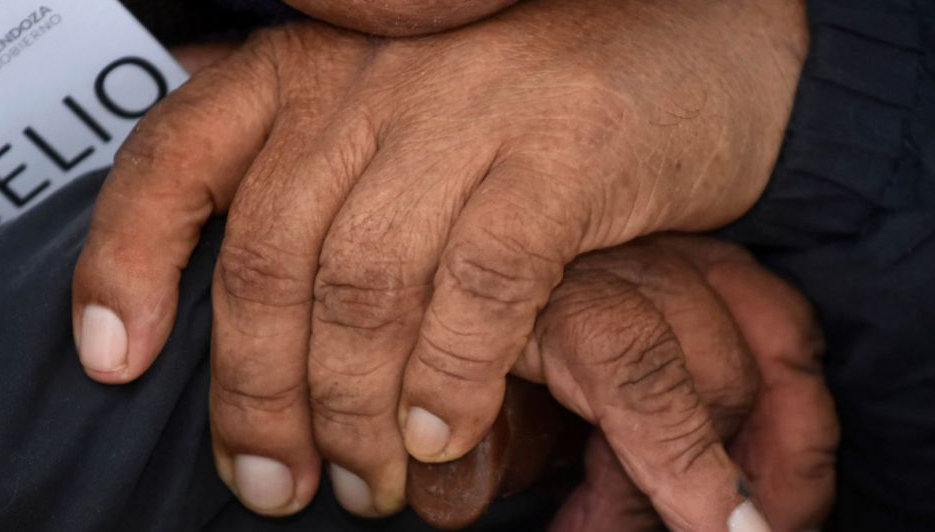
The Red Cross launched a campaign to raise awareness to end the abuse of older adults. Photo: The Andes.
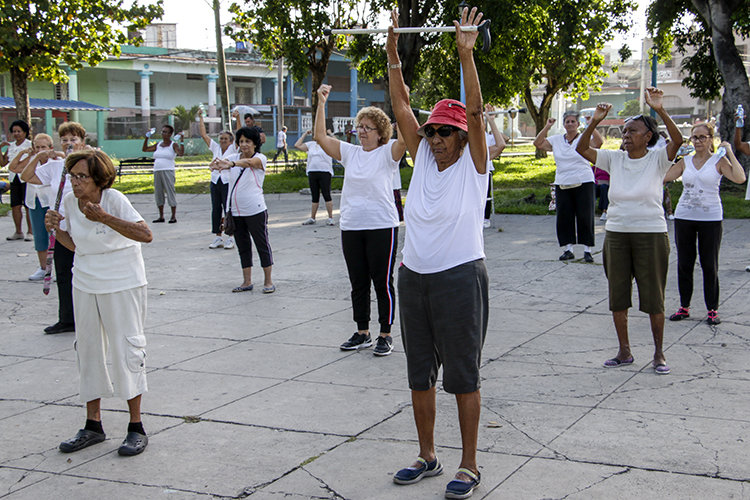
In Cuba, attention to and respect for older adults is a priority. Photo: Abel Oadrón Padilla/ Trabajadores.
| M | T | W | T | F | S | S |
|---|---|---|---|---|---|---|
| 1 | 2 | 3 | 4 | 5 | 6 | |
| 7 | 8 | 9 | 10 | 11 | 12 | 13 |
| 14 | 15 | 16 | 17 | 18 | 19 | 20 |
| 21 | 22 | 23 | 24 | 25 | 26 | 27 |
| 28 | 29 | 30 | ||||
